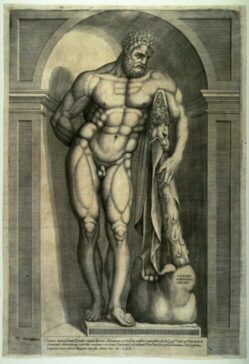Musculoskeletal Anatomy

MVS 230
Faculty Curator: Michele Bird (School of Kinesiology)
On view: Winter 2024
Like the students in the School of Kinesiology, European artists of the early modern period (approximately the fourteenth to eighteenth century) devoted time and attention to the study of human anatomy. Beginning in the Italian Renaissance, scientific knowledge of the body developed hand in hand with artistic innovations in representing perspective, depth, and volume as scholars gained more detailed understanding of the inner structures of the body through dissection of human corpses.
The attention to anatomical detail in artworks such as those on display for this installation present interesting puzzles to the highly trained eyes of the Kinesiology students. What appears correct in these depictions of the muscles and bones of these human figures? What appears wrong, and can we describe these errors in the advanced language of contemporary anatomical understanding? Throughout the semester, students in Movement Science 230 will closely examine these artworks and write detailed analyses of the artists’ representations of musculoskeletal anatomy.
Works Included In This Collection






SUPPORT
Lead support for this exhibition is provided by the University of Michigan Office of the Provost, Erica Gervais Pappendick and Ted Pappendick, the Eleanor Noyes Crumpacker Endowment Fund, and the Oakriver Foundation.